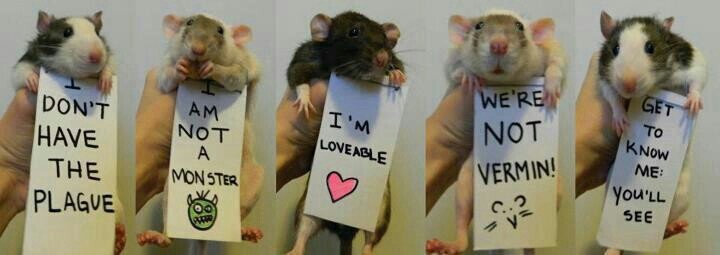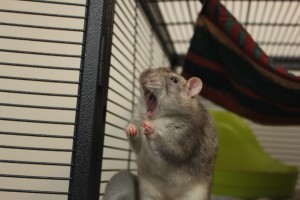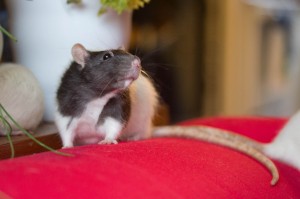Are rats really the smelly, disease ridden vermin society makes them out to be? We don’t think so, here’s why.

Rats are dirty!
 Not at all. Rats love to be clean. They are nearly obsessive with their grooming rituals; self-cleaning and helping their cage-mates to stay clean is in fact an essential part of social order. Rats groom themselves more often than cats do, shed less than cats do, and have less odorous urine and feces than cats and dogs. Not to mention sleeping, playing and eating (the three main activities in any rat’s life) is proceeded and concluded by a consistently practiced and ritualistic cleaning. Every rat will have his or her own process, but usually, the face is always cleaned first, followed by the sides, then the thighs and haunches, and the entire belly. And do they clean those hands and feet? You bet! Nothing is more adorable than seeing a rat licking each of his feet clean and finally, ending the procedure by licking those front paws. So as long as you don’t force your rats to live in filth, you can safely bet they’re probably cleaner behind the ears than you are!
Not at all. Rats love to be clean. They are nearly obsessive with their grooming rituals; self-cleaning and helping their cage-mates to stay clean is in fact an essential part of social order. Rats groom themselves more often than cats do, shed less than cats do, and have less odorous urine and feces than cats and dogs. Not to mention sleeping, playing and eating (the three main activities in any rat’s life) is proceeded and concluded by a consistently practiced and ritualistic cleaning. Every rat will have his or her own process, but usually, the face is always cleaned first, followed by the sides, then the thighs and haunches, and the entire belly. And do they clean those hands and feet? You bet! Nothing is more adorable than seeing a rat licking each of his feet clean and finally, ending the procedure by licking those front paws. So as long as you don’t force your rats to live in filth, you can safely bet they’re probably cleaner behind the ears than you are!
Rats bite!

As do hamsters, gerbils, mice, rabbits, guinea pigs, cats, dogs… humans. Given a stressful or scary situation, just about any living thing with teeth can and will resort to biting. But the misconception is that rats bite a LOT, which is completely false. In fact, compared to all the other rodent-type pets available, even an un-socialized, un-trained rat will tolerate rougher handling than any other rodent without resorting to biting. Even with a terrified rat, it is highly unlikely that he will bite. Instead a scared rat will shriek, scream, squirm and bolt for the darkest nook he can find.
Rats have gross tails!
We would be a lot richer than we are now if we got a quarter for every time we’ve heard this phrase. Most people meet rats for the first time, or see pictures of healthy, happy rats for the first time and will grudgingly agree that they are adorable, but for some strange reason, the tail of a rat is somehow always an exception. People say it looks like a snake, or a worm. Some think it looks slimy or scaly; others think it’s bald and looks “gross”. We want to dispel these misconceptions of the rat’s most interesting and versatile body part, because once you get to know a rat, you will realize that rat tails are actually amazing.

Rat tails are covered by fine hairs. They are smooth and dry to the touch and have a texture that’s similar to velvet.
Rat tails are a balancing tool. They don’t slither or squirm like snakes or worms. A rat’s tail flickers or sticks out at angles to counter-balance the body. Young rats will almost always hold their tails a few centimeters off the ground as they move. Older rats may be unable to hold it up, and instead trail it behind them. At rest, a rat’s tail is just as still as the rat and is often curled around the body, like a cat’s tail would.
Rat tails are built-in climate control. The tail of a rat has 3 major blood vessels running through it which the rat can constrict and expand at will with its powerful tail muscles. So when it gets too hot, the rat will expand its tail blood vessels to disperse heat more quickly and when it’s cold, the rat can squeeze its tail muscles to constrict the blood vessels, reducing the amount of heat lost while circulating a rat’s lengthy tail.
So although we may not be able to change how you see rat tails, hopefully your perception of them is now more accurate. After all, a rat is not a rat without its distinguishing tail!
